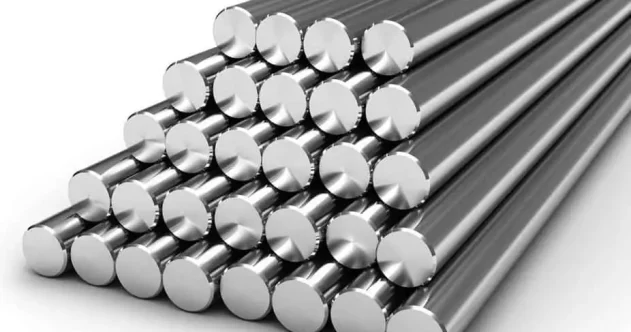
- +8615586668226
- [email protected]
- No. 30, Hongbang Industrial Park, Shenzhen

Alloy steel, as the name suggests, is a type of steel alloy that contains specific additions of alloying elements other than carbon. These added elements, such as nickel, chromium, molybdenum, manganese, silicon, and vanadium, are present in varying proportions to enhance the properties of the steel. The addition of these alloy elements can significantly impact characteristics like hardness, toughness, corrosion resistance, and strength at high and low temperatures. Think of it like adding ingredients to a recipe – each element contributes a specific flavor to the final product.
Alloy steels are carefully engineered to meet specific performance requirements. As a CNC fabrication manufacturing plant, we work extensively with alloy steels in processes like 5 Axis CNC Machining because of their superior properties. For instance, adding chromium can make the alloy more resistant to corrosion, resulting in stainless steel.
Carbon steel, primarily comprises iron and carbon. The carbon content is the primary determinant of the steel’s properties. Higher carbon content generally increases hardness and strength but reduces ductility and weldability. Carbon steel is generally less expensive than alloy steel and finds wide use in numerous applications. It’s a versatile material, forming the backbone of many everyday objects.
In our Machining Services, we utilize several types of carbon steel for parts that don’t require the specialized properties of alloy steels. This helps keep costs down while still delivering high-quality results. For example, low-carbon steel is often used for sheet metal applications due to its formability.
The key difference between alloy and carbon steel lies in their composition. While carbon steel mainly consists of iron and carbon, alloy steel contains additional alloying elements. These additions modify the steel’s microstructure, resulting in a wider range of properties compared to carbon steel. This difference allows for more targeted applications, matching material properties to specific demands.
For instance, in demanding sectors like Aerospace and Automotive, alloy steels are preferred for their ability to withstand extreme conditions. The specific alloying elements are carefully chosen to enhance properties such as strength, toughness, and heat resistance.
| Property | Alloy Steel | Carbon Steel |
| Strength | Higher | Moderate |
| Hardness | Higher | Moderate |
| Toughness | Can be higher | Moderate |
| Corrosion Resistance | Can be much higher | Lower |
| Weldability | Can be lower | Generally good |
| Cost | Higher | Lower |
As you can see, the properties vary based on the specific alloying elements present in the alloy steel. Understanding these variations is key to selecting the right steel for your application.
Alloy steels are categorized based on their alloying elements and properties. Examples include stainless steel (corrosion resistant), high-speed steel (high hardness and wear resistance), and tool steel (high strength and toughness). Carbon steels are classified by their carbon content: low-carbon steel, medium-carbon steel, and high-carbon steel. Each type offers a unique set of properties, catering to specific needs.
Increasing carbon content in steel generally leads to increased hardness and strength, but at the cost of reduced ductility and weldability. For instance, high-carbon steel is extremely hard but brittle, while low-carbon steel is more ductile and easier to weld.
Carbon steel finds widespread use in construction, automotive components, and everyday objects. Alloy steels, with their enhanced properties, are employed in demanding applications like aerospace components, medical devices, and specialized tooling.
Choose alloy steel when the application demands specific properties not achievable with carbon steel, such as high strength at elevated temperatures, superior corrosion resistance, or specific magnetic properties. The added cost of alloy steel is justified by its enhanced performance in these demanding environments.
Alloy steel generally costs more than carbon steel due to the addition of alloying elements and the more complex manufacturing process. However, the enhanced performance and longevity of alloy steel can often outweigh the higher initial cost.
Choosing between alloy and carbon steel involves carefully balancing performance requirements and cost considerations. Factors such as the operating environment, required strength, and corrosion resistance play a crucial role in making the right decision. Consult with our experts at CNC Fabrication to discuss your specific needs and ensure optimal material selection for your Rapid Prototyping and On Demand Manufacturing needs.
What is the hardest type of steel? High-speed steel is known for its extreme hardness, making it ideal for cutting tools.
Can alloy steel rust? While some alloy steels, like stainless steel, are highly corrosion resistant, others can rust if not properly protected.
Is stainless steel an alloy steel? Yes, stainless steel is a type of alloy steel containing chromium, which provides its corrosion resistance.
What is mild steel? Mild steel is a common name for low-carbon steel.
Alloy steel contains additional alloying elements that enhance its properties.
Carbon steel’s properties are primarily determined by its carbon content.
Alloy steel is generally more expensive but offers superior performance in demanding applications.
Choose the right steel based on the specific requirements of your project.
Consulting with a materials expert can help ensure optimal material selection.
Get the latest trends and facts about CNC fabrication from our blog.
Shenzhen Runkey Precision Technology Co. Ltd, a subsidiary of the Tensun Group, is your trusted one-stop solution for custom manufacturing from prototyping to production.Transforming your idea into reality with digital manufacturing resources,streamlined processes, expert guidance,accelerated timelines, and uncompromising quality.
©2024. CNC Fabrication All Rights Reserved.